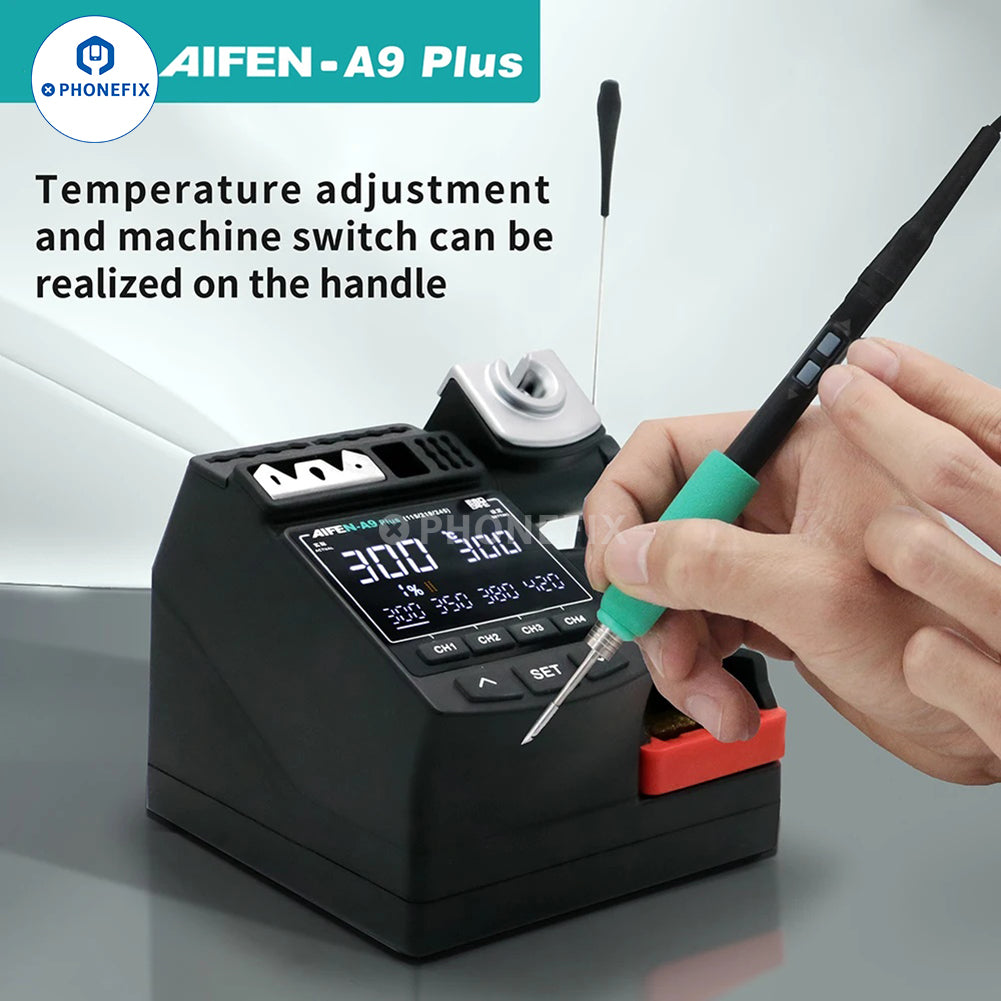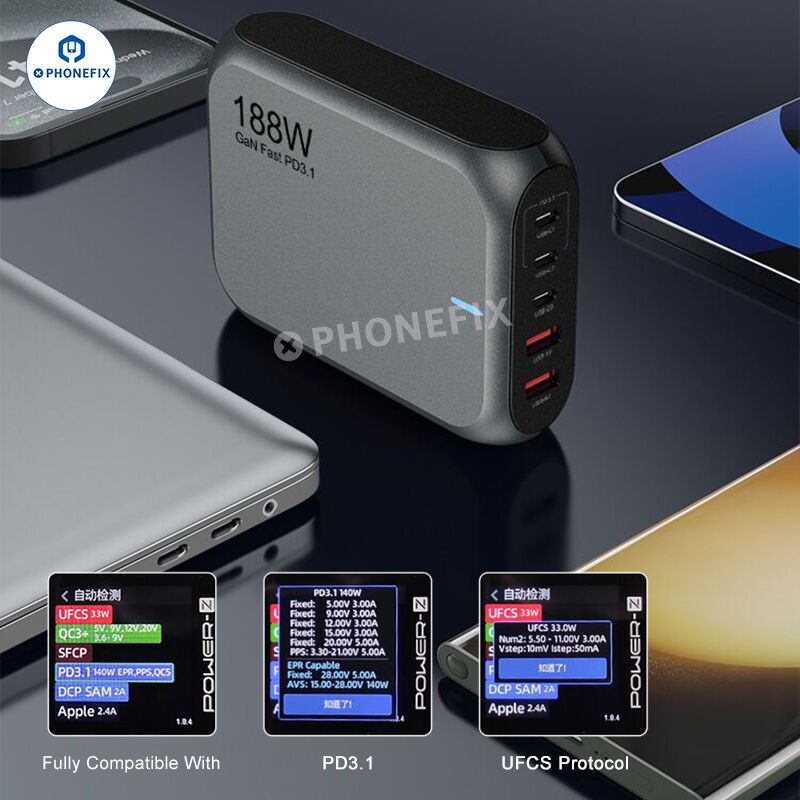In daily use, we frequently plug and unplug the iPhone's Charging Cable, which puts a lot of pressure on the iPhone's charging port. Over time, the charging port becomes more and more fragile and prone to damage, causing a lot of inconvenience to our use. If you are troubled by this, don't worry. We have accumulated rich experience. Next, let's take a deeper look at how China Phonefix can cleverly solve this problem for you.
Why do problems occur with the iPhone charging port?
Physical damage: Over time, your iPhone's charging port may become worn or damaged. Frequent plugging and unplugging of the charging cable may cause the metal contacts inside the port to bend or break, affecting the stability of the charging connection.
Dust and debris: Dust, pocket lint, or other small particles may accumulate inside the charging port, which can affect the insertion and contact of the charging cable. If the charging cable cannot be fully inserted, this may cause unstable or no charging. It is recommended to clean the charging port regularly, and you can use a Soft Brush or toothpick to gently remove debris.
Software failure: Sometimes, software problems affect the communication between the device and the charger, causing the charging function to fail. Updating the operating system or restarting the device may resolve these failures.

Charging cable and adapter problems: A malfunction in the charging cable or adapter may also cause the charging port to appear inoperative. For example, a damaged charging cable may not provide a stable current and also cause charging problems. Trying a different charger and cable can help determine if the problem is with these two components.
Temperature factors: Extreme temperature conditions can also affect the function of the charging port. In high or low temperature environments, the performance of the device and charger may be affected, causing charging problems.

The operation of the iPhone charging port can be maintained and cared for:
Cleanliness of the charging environment: In addition to physical damage and dust, the hygiene of the charging environment may also affect the device's charging ability. Troubleshooting in a clean and bright environment can help avoid further failures.
Regular inspection and maintenance: Regular inspection of the charging port can detect potential problems in time, such as bent metal contacts or corrosion. If you find obvious damage or foreign objects inside the port, you should seek professional repair service in time.

Use undamaged accessories: Using high-quality charging cables and adapters is key to ensuring a stable connection. Even new cables can cause problems if they are not up to standard.
Alternative charging methods: Consider using Wireless Charging (for iPhone 8 and later models) as an alternative, which can reduce wear and tear on the charging port and extend its life. Regardless, keeping your device in good working condition and using it with caution has always been an effective way to prevent charging port problems.
How to Repair iPhone Charging Port?
Clean the charging port
Check inside: Use a flashlight to observe the charging port for dust, fibers, or other foreign matter. If you find any dirt, you can use a small tool, such as a toothpick or cotton swab, to carefully clean the charging port. And add a Dustproof Net Sticker.
Use alcohol: Dip a cotton swab in a small amount of isopropyl alcohol (alcohol) and gently clean the port. If the charging port is liquid or wet, tap it with the charging port facing down to help drain the excess liquid, and wait at least 30 minutes before trying to charge.

Check the charging cable and adapter
Observe damage: Carefully inspect the charging cable and USB adapter for damage, such as peeling, bending, or corrosion. Confirm that the charging cable and adapter used are compatible and genuine.
Replacement test: If feasible, you can try to replace another charging cable or adapter to confirm whether it is a cable problem.
Locate poor contact
Slight adjustment: Gently shake the charging cable or phone while charging to see if there is a short connection, which can help determine whether there is a poor contact problem. If it can be charged at this time, the charging port may need to be replaced.
Replace the charging port: If the above inspection and cleaning still cannot solve the problem, you may need to consider replacing the iPhone Charging Port. The replacement process can be complicated, so it is recommended to seek professional repair services for processing. You can refer to some video tutorials to help understand the specific steps of replacing the port.

Restart the device: Before doing any hardware checks, try restarting the iPhone first. This can sometimes solve temporary software glitches that cause charging problems.
Use original accessories: Make sure to use original charging cables and adapters, which can effectively reduce the risk of poor charging. Some third-party accessories may be incompatible or of poor quality and affect the charging effect.
Check the charging port: If the above steps do not solve the problem, it is recommended to carefully check the charging port again. Use a magnifying glass to confirm whether there are any foreign objects that are not visible to the naked eye. If necessary, ask a professional for a more in-depth inspection. Treat the internal components with extra care to avoid further damage.
Software failure: In addition, it is also necessary to consider that the charging failure may be caused by software problems. Make sure the device's iOS system is updated to the latest version, which can solve some hardware incompatibility problems.
Precision iPhone charging port repair:
Tools Required
Screwdriver: A set of Precision Screwdrivers is essential. You need screwdrivers of different sizes to remove the screws on your iPhone. For example, there are usually small Pentalobe screws on the bottom of the iPhone near the charging port, so a dedicated Pentalobe screwdriver is required.
Prybar: This is a small flat tool used to gently pry open the iPhone case without scratching the device. It helps separate different components without causing damage.
Tweezers: Precision Tweezers are great for handling small parts, such as microconnectors and components near the charging port. They allow for delicate operations.
Soldering Iron and Solder: If you need to solder or re-solder the charging port, you need to use a pointed Soldering Iron and high-quality solder. The soldering iron should be set to the right temperature to avoid overheating and damaging surrounding components.
Magnifying Glass or Magnifying Light: A magnifying glass or magnifying light is very useful when working on the fine details of the charging port. It allows you to clearly see the tiny components and connections.

Things to Note Before You Start
Turning Off the iPhone: Before starting any repair work, always turn off the iPhone completely. This helps prevent short circuits and electrical accidents during the repair process.
Work in a static-free environment: Static electricity can damage sensitive components inside your iPhone. Before working on the device, use an antistatic mat or Wrist Strap to discharge static electricity from your body.
Repair Steps
Remove the Screws: Locate the two screws on the bottom of the iPhone near the charging port. Use an appropriate Pentalobe screwdriver to carefully remove them. Save the screws to avoid losing them.
Remove the Front Panel: Using a Spudger, start at the bottom corner and gently insert it between the front panel and rear case of the iPhone. Slowly and carefully pry the front panel away from the rear case. Be careful as there are still cables connecting the two parts.

Disconnect the Battery Cable: With the front panel partially separated, locate the battery cable connector on the logic board. Use tweezers to gently lift the tab on the connector and disconnect the battery cable. This step is critical to safety during the repair as it removes power to the device.
Locate the Charging Port Assembly: After disconnecting the battery cable, carefully remove any other components or cables that may be obstructing the charging port assembly. The charging port is usually part of a larger assembly that may contain the headphone jack (if present) and other connectors.

Remove the charging port assembly: Use a precision screwdriver to remove the screws that secure the charging port assembly. Then, gently lift the assembly out of its socket. Be careful not to damage any small connectors or traces on the logic board.
Inspect the charging port: Use a Magnifying Glass to carefully inspect the charging port. Check for signs of damage, such as bent pins, broken plastic parts, or corrosion. If a pin is bent, you can try to carefully straighten it using precision tweezers. If corrosion is present, you can clean it with a small amount of isopropyl alcohol and a soft brush.
Replace the charging port (if necessary): If the charging port is severely damaged, it is best to replace it with a new, high-quality part. Align the new charging port assembly with the socket on the logic board and secure it in place with the screws.
Reassemble the iPhone: Reassemble the iPhone by reversing the steps. First connect the iPhon Battery connector and make sure it is properly seated. Then, carefully reconnect the front panel to the rear case and secure it with the screws on the bottom.

Testing
After reassembling the iPhone, power on the phone and test the charging port. Connect the charging cable to see if the iPhone charges properly. If the problem persists, double-check all connections and components to make sure the repair was completed correctly.
Remember, precise repair of your iPhone's charging port demands patience, the proper tools, and a solid grasp of your device's internal structure. If you're in need of the tools mentioned above, Phonefix is your go-to destination. We not only stock all those essential tools but also offer Tail Plugs designed to test chargers. This comprehensive selection will streamline your repair process, making it more convenient and efficient.












